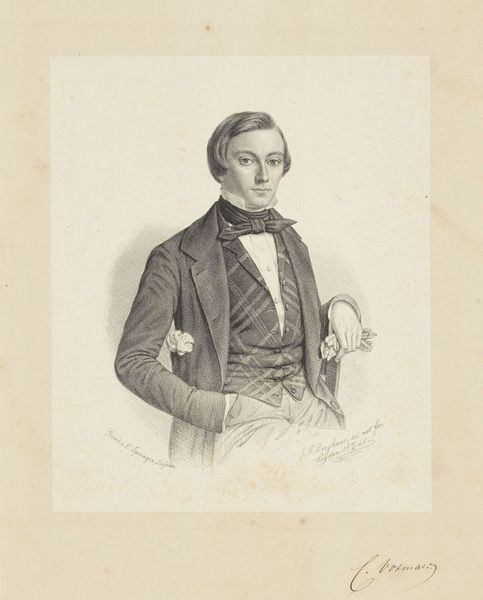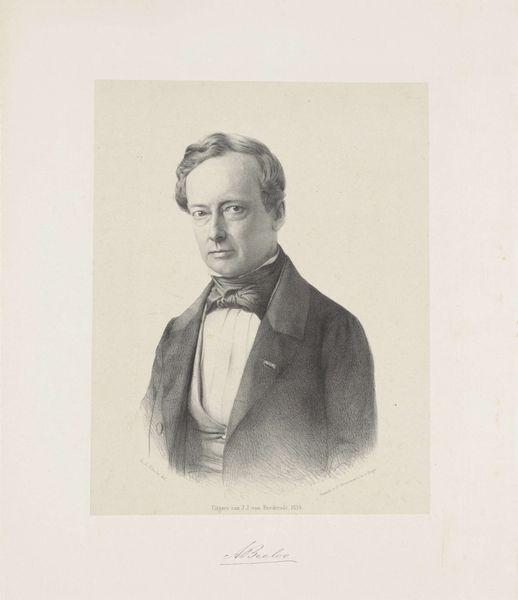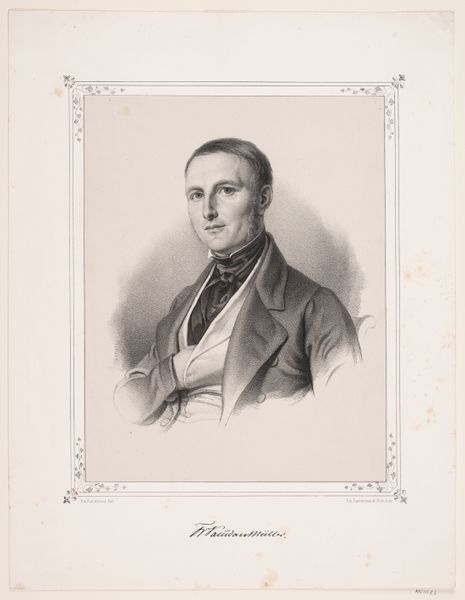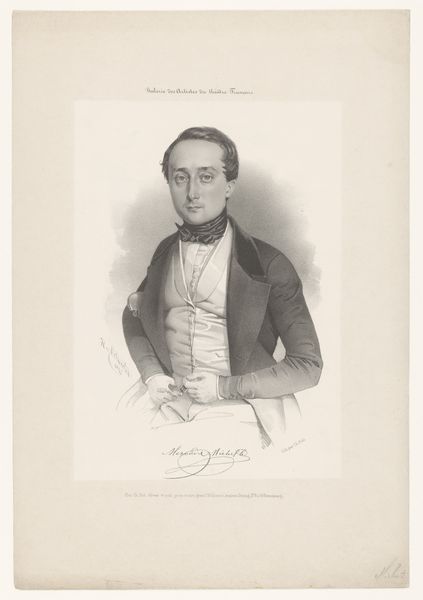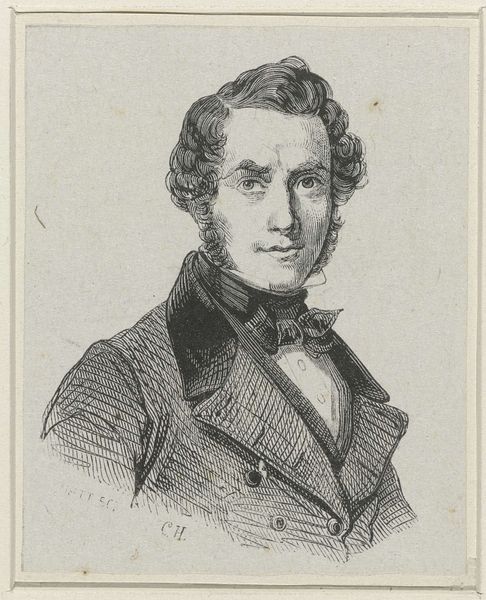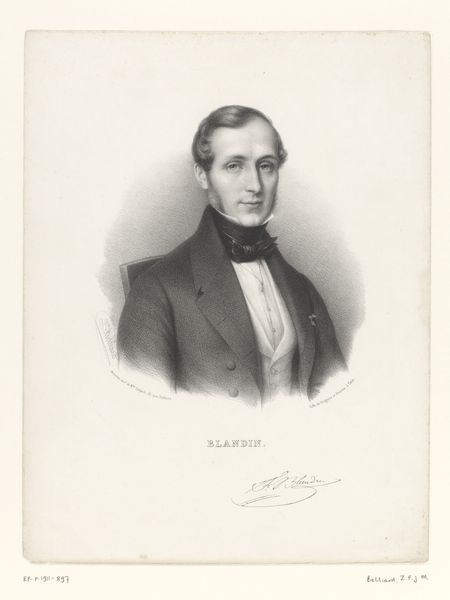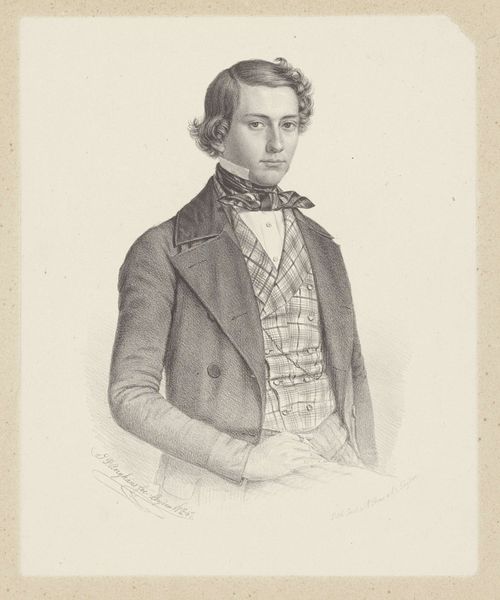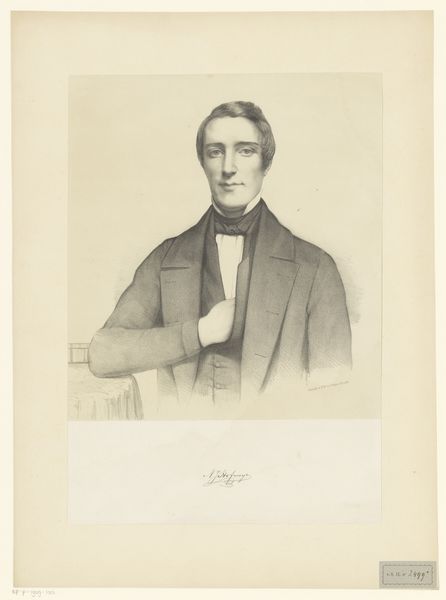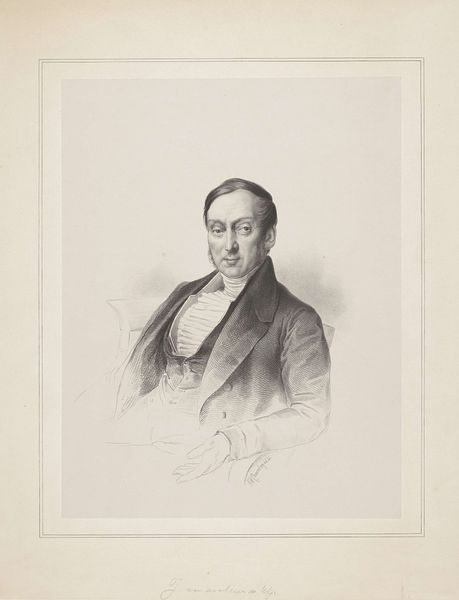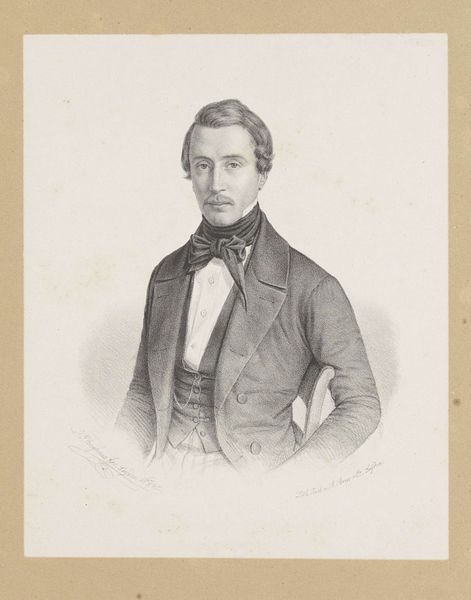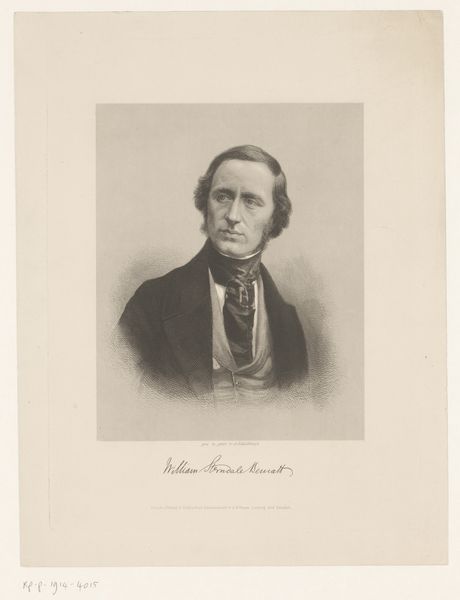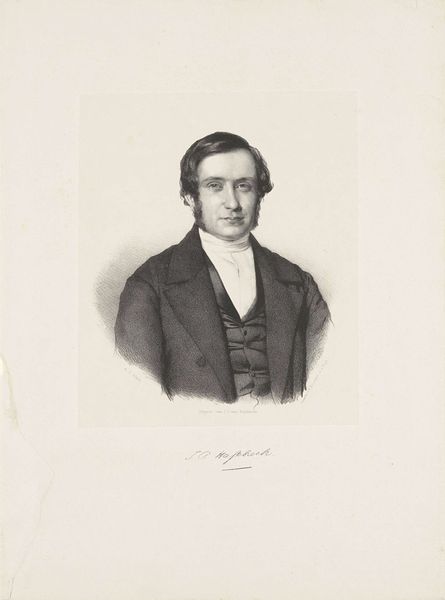
#
pencil drawn
#
light pencil work
#
photo restoration
#
pencil sketch
#
charcoal drawing
#
portrait reference
#
pencil drawing
#
yellow element
#
portrait drawing
#
graphite
Dimensions: height 365 mm, width 275 mm
Copyright: Rijks Museum: Open Domain
Editor: Here we have Adrianus Johannes Ehnle's "Portret van Bartholomeus Johannes van Hove," created sometime between 1842 and 1887. It looks like a pencil drawing. It’s incredibly detailed for what appears to be a sketch. What historical context do you see informing this work? Curator: Looking at this portrait, I immediately consider the social function of portraiture during the 19th century. It wasn’t just about capturing a likeness. It was often about projecting a specific identity, reinforcing social hierarchies, and conveying respectability. Van Hove, with his composed expression and formal attire, seems deliberately positioned within that framework. How might class and gender expectations have shaped his portrayal? Editor: That's a great point about social hierarchies! The detail in his clothing definitely speaks to a certain status. But were there also artistic or political elements in play, beyond just status? Curator: Absolutely. Think about the rise of nationalism in the 19th century. Portraiture often served to solidify national identities by celebrating prominent figures. Ehnle’s portrayal of van Hove may have subtly contributed to the construction of Dutch identity. The level of detail almost lends itself to the era’s rising sense of nationalism, doesn't it? Editor: I never considered that. It is interesting to view it through a nationalist lens. The drawing feels almost like an official record. Curator: Consider the materials. Graphite allows for precise detail. It evokes realism, objectivity—qualities prized during that era of scientific advancement and burgeoning photographic technology. What happens to our understanding of this image if we see it grappling with notions of objectivity during the dawn of photography? Editor: Viewing this portrait through different cultural and political lenses completely reshapes my perspective. Thank you! Curator: And thank you for raising new and insightful considerations for me! These discussions reinforce why interrogating the social and historical context of artworks remains vital.
Comments
No comments
Be the first to comment and join the conversation on the ultimate creative platform.
